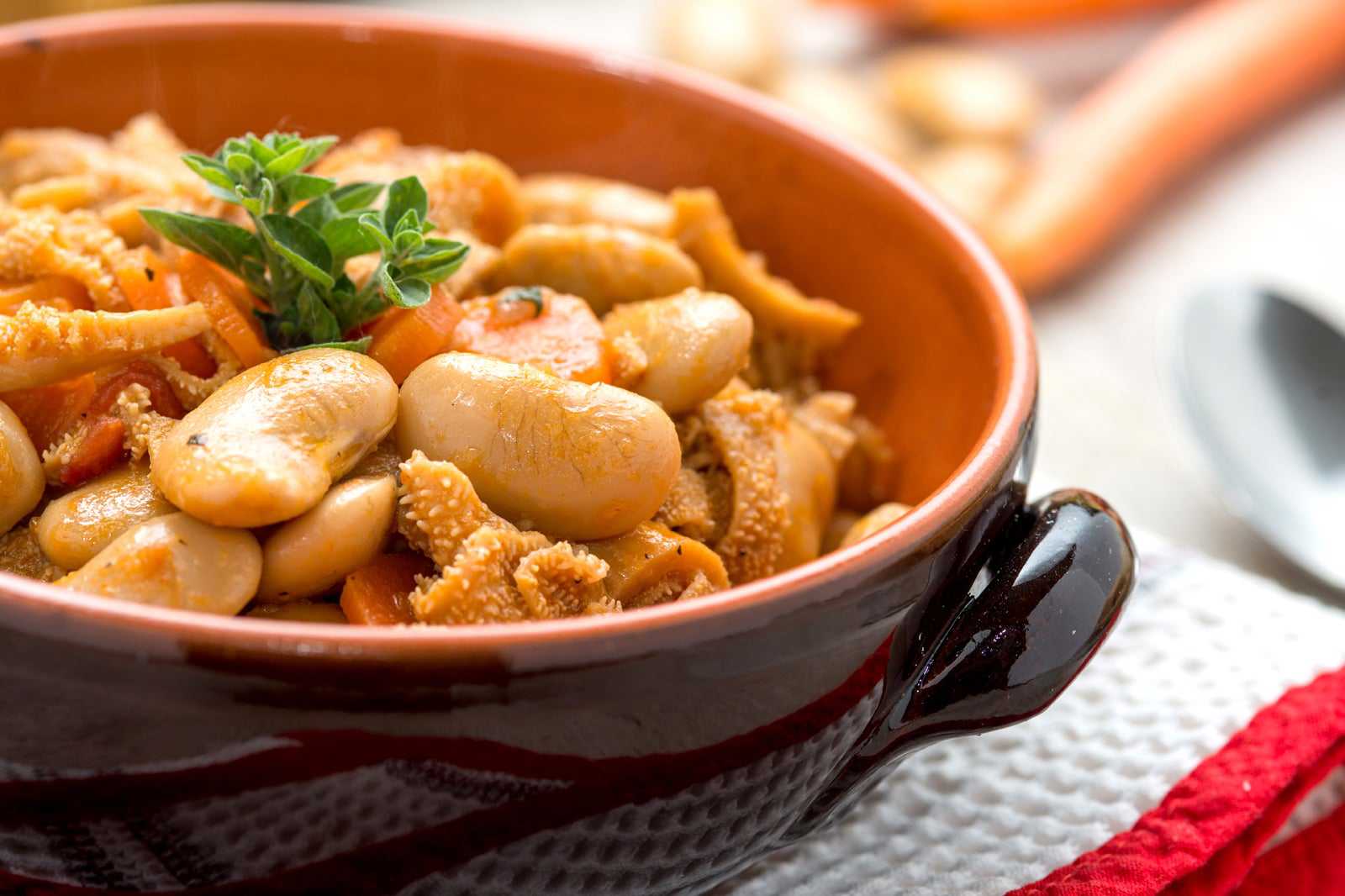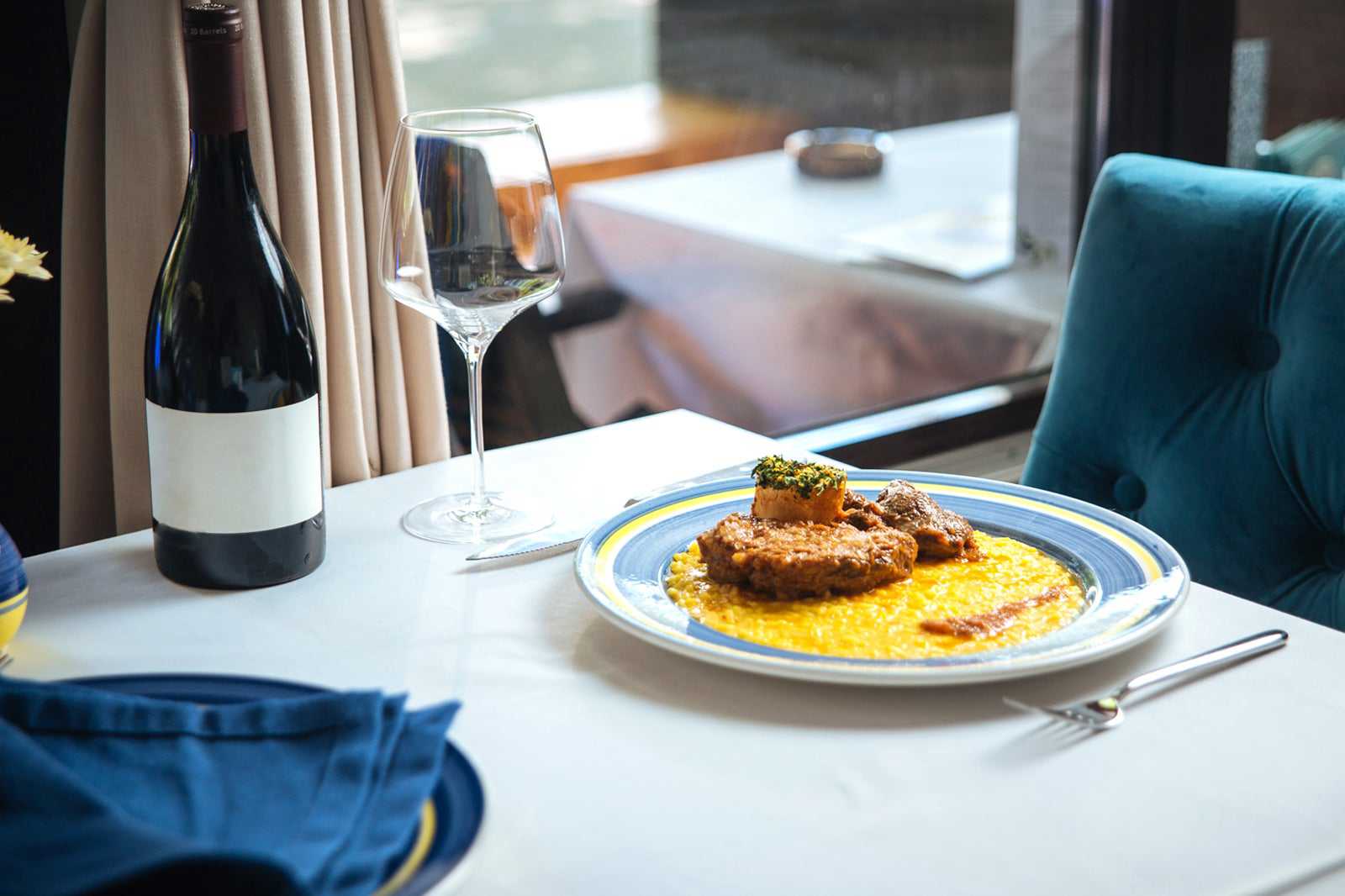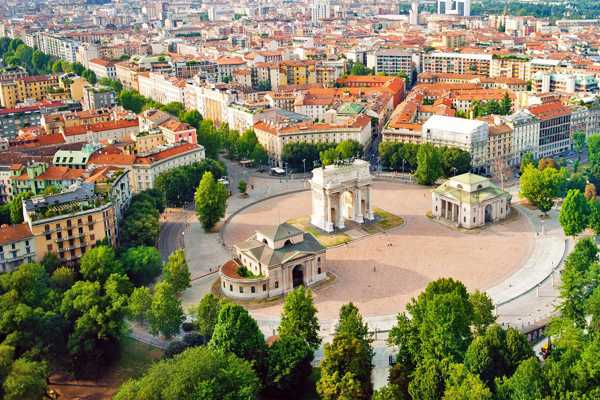Many of the best local dishes from Milan have strong ties to Milanese farming traditions and the era of cucina povera – 'poor kitchen'. That was when humble Italian cooks had to use whatever was available. As such, many local specialities use rice, polenta, butter, pork, and other produce grown and farmed on the city's surrounding farmlands.
Unlike the rest of Italy, you won't find olive oil and tomato-based cuisine in Milan. Instead, restaurants serve creamy risotto, veal cutlets fried in butter, veal and mortadella meatballs, and tripe and bean soup. Vegetarians can enjoy a steaming bowl of veggie-packed Minestrone Milanese. Keep reading to discover more famous foods locals love to eat in Milan.
- 1
Risotto alla Milanese
Milan’s signature dish

- Makanan
Surrounded by rice fields, it’s no wonder that Milan’s most iconic dish is risotto alla Milanese. This quintessential dish consists of creamy, golden, slow-cooked rice prepared with white rice, butter, onions, beef marrow, and a healthy dose of Parmigiano cheese.
The key ingredient that gives Milan’s risotto its signature yellow colour is saffron – a spice that is sometimes pricier than gold. According to legend, the risotto was invented in Milan in the 16th century when an apprentice who used saffron to stain the Duomo’s windows yellow decided to add the spice to white rice.
- 2
Minestrone Milanese
A thick, vegetarian-friendly soup

- Makanan
Minestrone Milanese is a traditional hearty vegetable soup locals love to eat year-round. There is no proper recipe – the soup is made with whatever vegetables are in season and readily available. But the basics usually include onions, beans, carrots, celery, and potatoes.
Some Milanese like to add grated Parmigiano cheese on top for extra flavour. What sets this soup apart from the rest of Italy is that Minestrone Milanese has rice instead of pasta. Restaurants serve cold, refreshing minestrone in the summer and hot soup in the winter.
- 3
Piadina
Italian flatbread stuffed with meat and cheese

- Budget
- Makanan
Come lunchtime in Milan, and locals flock to piadinerias in search of a delicious piadina. This thin, yeast-free Italian flatbread is made with just 3 ingredients: flour, water, and olive oil or lard. After mixing the ingredients, a piece of dough is rolled out into a circle and then cooked on a griddle.
When the flatbread is crispy and golden, it's filled with different kinds of cheese, cured meat, and vegetables. Piadinas are available throughout the city, and you can also find vegan and vegetarian-friendly options. Many locals consider that Piadineria Artigianale Pascoli near Milan's Central railway station serves some of the best in town.
- 4
Mondeghili
Milanese-style meatballs

- Makanan
Mondeghili are extra soft and juicy meatballs made with minced meat, vegetables, cereals, herbs, and spices. The ingredients are mixed with an egg and bread soaked in milk, shaped into a ball, and then deep-fried, fried in a pan, oven-baked, or cooked on a grill.
Historically, mondeghili was considered a dish of the so-called ‘povera cucina (poor kitchen) as it’s usually made with leftover roast veal or mortadella (pork sausage). However, today these tasty meatballs are commonly served as gourmet appetisers in upscale restaurants or at aperitif time, accompanied by a glass of bubbles or white wine.
- 5
Busecca
Wholesome, hearty tripe and bean-filled soup

- Makanan
Busecca – "tripe" in the Milanese dialect – is a filling soup that is sure to warm you up on a cold winter's day in Milan. The traditional wintertime soup is made with broth, tripe (stomach lining of sheep or cows), beans, various seasonal vegetables, broth and some tomato purée.
The soup may also appear as trippa alla Milanese on some restaurant menus. The dish has humble peasant origins and was originally prepared to celebrate special occasions in the countryside.
- 6
Cassoeula
A warming pork and vegetable stew

- Makanan
For many local Milanese, winter officially starts when cassoeula appears on restaurant menus across the city. Cassoeula is a warming pork and vegetable stew that follows a head-to-tail Italian recipe. That means that all the bits and pieces from the pig slaughter – including the nose, ears, ribs, feet and tail – are thrown into the pot.
This typical winter stew is often served alongside a creamy portion of polenta. Cassoeula is traditionally eaten on 17 January, the feast day of Saint Anthony the Abbot and the end of the pig slaughtering season. Saint Anthony the Abbot is the patron saint of butchers and all things swine-related.
- 7
Cotoletta alla Milanese
A speciality of Milan since the 12th century

- Makanan
Cotoletta alla Milanese is Milan's version of schnitzel. It's a thick, tender veal cutlet coated in crunchy breadcrumbs and fried in butter. The dish is a staple at many Milanese restaurants, from no-frills trattorias to fine-dining spots. Eateries will serve their cotoletta bone-in or boneless, usually with a side of fries, rocket salad, or risotto alla Milanese.
It's often suggested that the cotoletta was created in the 17th and 18th centuries when Milan was a part of the Austro-Hungarian Empire. However, locals will point out that this dish has been known since 1134 when a similar version was served to monks at Milan's Sant Ambrogio Basilica.
- 8
Ossobucco
A slow-cooked classic Milanese staple

- Makanan
Ossobucco, which translates to "bone with a hole" and is locally known as l'oss bus a la Milanesa, are wine-braised veal shanks. The veal shanks are slow-cooked for hours in a beef broth with vegetables and wine until the meat is soft and tender enough to cut with a fork and melt in your mouth.
Before serving, the dish is usually topped with gremolà, a relish made with minced garlic, mashed anchovies, parsley, and lemon zest. Ossobucco is traditionally accompanied by polenta or risotto alla Milanese. You can order ossobucco at most traditional restaurants in Milan.
- 9
Arrostino annegato
A juicy veal slow-cooked in white wine

- Makanan
Arrostino annegato, locally called rostin nega’a, which means “drowned roast”, is a beloved local dish consisting of the most emblematic ingredients of Milanese cooking traditions: butter, wine, and veal. The food is prepared by first browning a boned loin of veal and pancetta cured meat in butter.
Wine, lemon juice, brown stock, sage, and rosemary are then added. The meaty stew is slow-cooked with the pot lid on until it is exceptionally tender. The juicy veal is usually served with risotto, polenta, mashed potatoes, or roasted potatoes.
- 10
Panettone
Delicious sweet bread with dried fruit

- Makanan
Milan is the birthplace of panettone – a famous Italian sweet cake-like bread filled with dried raisins and candied fruits. The tall, dome-shaped cake is traditionally enjoyed at Christmas and New Year, accompanied by hot chocolate, ice cream, or eggnog.
If you're visiting Milan at Christmas, the cake is a lovely gift for friends and family. While you can find mass-produced panettone at supermarkets, it's worth splurging on one made fresh at a local bakery. A small Milanese food trivia: the law dictates that all panettone is made with natural yeasts.



















